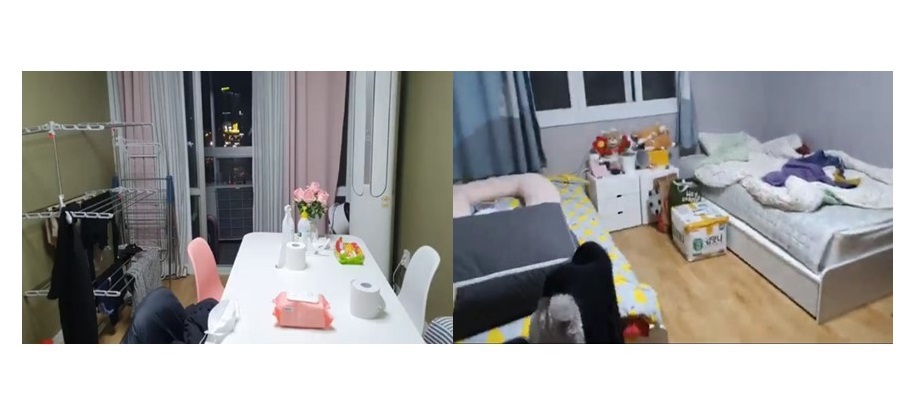 |
(123rf) |
Kang, an office worker in his 20s, recently became a co-owner of a commercial building located in Seoul’s Gangnam district worth 10 billion won ($8.47 million) with a capital of only 5,000 won.
“Earlier in December last year, I participated in a joint investment project led by a local fintech firm to buy a building named Yeoksam London Vill, a recently built eight-story commercial property in Gangnam. I invested 5,000 won and received 38 won as dividends in July, acquiring one share of the property. The annual rate of return is 3.14 percent,” said Kang, who only wanted to be known by his last name.
Kang is among a growing number of those from the so-called “MZ generation,” referring to people born from the 1980s to 2010s, who have turned their eyes to joint property ownership, even with a really small sum of money.
According to Kasa Korea, a local fintech firm operating the mobile property investment application Kasa, a total of 2,694 individual investors like Kang took part in its latest public offering process -- between Sept. 8 and 16 -- for a 21-story commercial building located in Yeoksam-dong, southern Seoul. They raised a combined 8.4 billion won.
Those in their 20s and 30s accounted for nearly 60 percent of the investors, followed by 40-somethings (26 percent), 50-somethings (12 percent) and those aged 60 and over (3 percent), the company said.
Launched in September last year, the mobile platform Kasa uses blockchain technology to issue digital asset-backed securities -- priced at 5,000 won per unit -- for ownership of a given building purchased by Kasa Korea. The company shares the building’s leasing revenues with its investors in the form of dividends, every three months.
Designated as one of the “innovative financial services” by the policymaking Financial Services Commission in 2019, the service is aimed at lowering retail investors’ threshold to the profitable commercial real estate market.
The rising trend of co-investment for fractional property ownership is gaining popularity especially among the country’s young generation frustrated by sky-high real estate prices.
“I once read an article saying an ordinary income earner can buy a house in Seoul by saving the entire income without spending a dime for more than 10 years,” said an investor surnamed Lee who took part in Kasa Korea’s investment projects.
“Amid the overheated real estate market, it’s almost impossible to buy a property through my earned income. So I resorted to the co-ownership of real estate as an alternative investment option, even though the rate of return is not that high,” the 31-year-old said.
The group buying of real estate has also risen as an international phenomenon. In the United States, the number of people with different last names, who bought houses together, increased by 771 percent from 2014 to 2021, according to data from real-estate analytics firm Attom Data Solutions.
“The prolonged low interest rate environment sparked a bubble burst in the real estate market across the globe. The higher housing prices rise, the stronger demand for homeownership the millennials would feel. Tired of paying rent, younger generations will continue to eye co-investment opportunities to fulfill their homeownership demand,” said Ahn Dong-hyun, an economics professor at Seoul National University.
Building apartments together
Some investors pool their money together for buying land to build an apartment complex on.
Known as “local housing association for apartment project,” a group of people living in the same city or neighborhood, without homes, together raise a large sum of money needed to purchase plots of land -- which is subject to their local district office’s approval -- and to cover the cost of constructing apartment buildings.
A 35-year-old office worker in Seoul surnamed Kim recently applied to become a member of the local housing association in Sadang-dong, Dongjak-gu, which plans to build an apartment complex near Isu Station, comprising 961 apartment units.
“Even though the authorization process generally takes several years, I think it’s worth a try since I can’t buy my own house for the time being anyway, considering the chaotic real estate market conditions,” Kim said.
Despite the rollout of dozens of government policies to tame runaway home prices over the past four years, the average price of an apartment in Seoul doubled to 1.21 billion won in October from 607 million won in May 2017, when the current government took office, according to KB Kookmin Bank data.
Also, the median housing price across the country surged 11.98 percent in the January-September period, the sharpest increase in 15 years.
Sharing living space
The nation’s overheated housing market has also been putting a financial burden on people living in houses on lease.
Facing home price hikes, some young home-seekers have turned to living in a share house, a type of accommodation for rent in which people share certain communal areas such as kitchens or bathrooms, while having a private room. Share houses provide lower deposits and monthly fees compared to other rental apartments.
Kim Joo-hye, a 28-year-old office worker, who used to live in an “officetel,” or studio apartment, in Gwacheon, Gyeonggi Province, recently moved into a share house located near her workplace in Yeouido, mainly to save on housing expenses.
“I’ve lived with a housemate, who is also an office worker in Yeouido, for nearly two years. We sleep in separate rooms, but share the kitchen, bathroom and living room. I had to pay nearly 700,000 won for monthly rent when I was living in an officetel, but now it’s down to some 400,000 won,” she said.
“Young office workers like me, who just started a career, confront a heavy burden of paying rent and other housing costs like maintenance fees. Co-living eases such pressure as housemates share the financial responsibility.”
 |
Jung, a 23-year-old college student, lives in a share house in Yongin, Gyeonggi Province. She chose co-living instead of an apartment to reduce housing expenses. (Courtesy of Jung) |
Shared housing is also a popular off-campus alternative for college students, who are having a hard time coping with the rent hikes and expensive tuition.
“The average monthly rent for a two-bedroom apartment in Yongin, Gyeonggi Province, hovers above 400,000 won. Of course that’s cheaper than the monthly rent fee in Seoul, which was a heavy financial burden for me. So, in March, I moved into a share house near the university. Since the place is equipped with beds, basic home appliances and necessities, I can reduce not only the rent, but also living expenses,” said a 23-year-old college student who only wanted to be known as Jung.
Experts say the co-living trend is likely to gain further momentum as home prices continue to rise with the growing number of single-person households.
The portion of single-member households in South Korea surpassed 40 percent of the total in October, according to the Ministry of Interior and Safety, extending an upward trend from 39.7 percent in June, 39.5 percent in March and 39.2 percent at the end of last year.
“Under rising inflationary pressure, the younger generations with poor finances, especially single-person households, can’t help but strive to reduce housing expenses by seeking alternative accommodation options like house sharing,” said Kim Kyung-min, a professor of urban informatics at Seoul National University’s graduate school of environmental studies.
By Choi Jae-hee (
cjh@heraldcorp.com)









